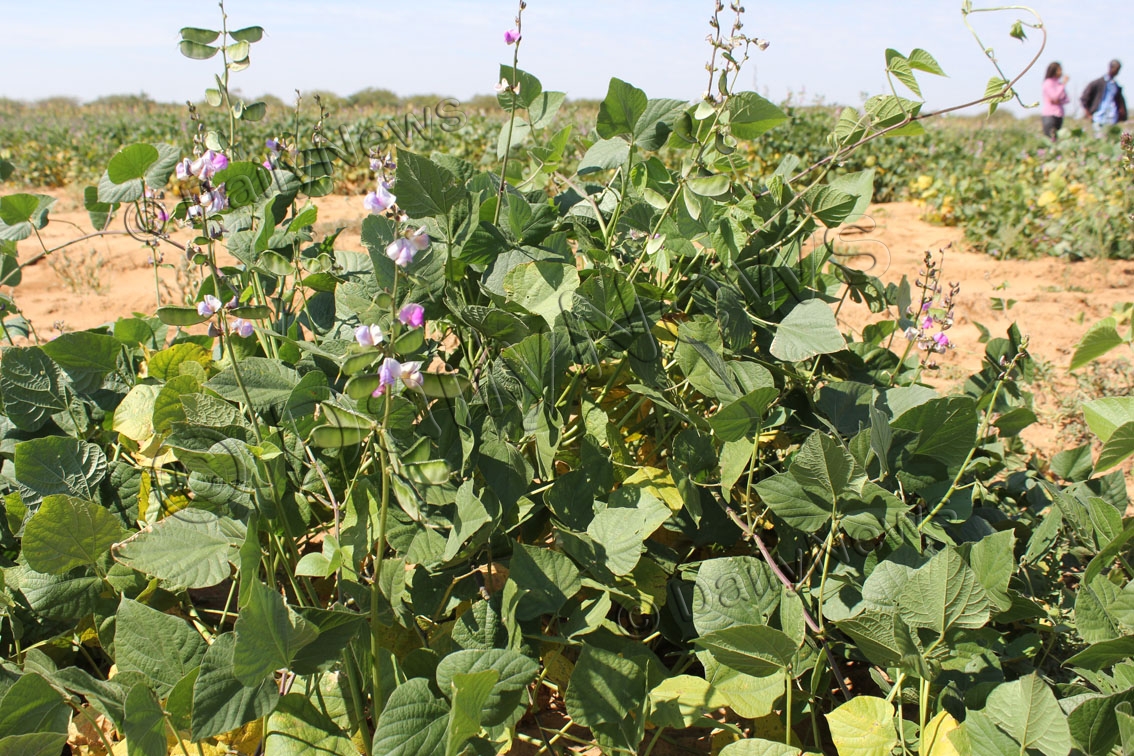Lablab Answer to cattle industry
05 May 2015
Lablab Purpureus, otherwise known as Lablab, is a promising plant. It is a dual purpose legume that provides high forage quality. As a green manure crop, it also has the ability to restore soil fertility and once established, is drought tolerant.
It has high grain yields and a better root disease resistance than many plants of its species. It grows in a wide range of soils from deep sands to heavy clays and is capable of extracting water from at least a two metre depth even in heavy textured soils.
It requires less fertilizer application except in extreme conditions, and because of its fast maturity, it is able to outgrow many weeds before they attack it. It is also attacked by a few pests. Lablab has been cultivated for so long that its origins are obscure, but it is thought to originate in the Tropics.
For a long time Batswana have been known to be avid believers in the cattle industry. That is despite the fact that the country has mostly arid regions coupled with erratic and unreliable rainfalls. Seasonal fluctuations in nutritional quality of natural pastures also compromise livestock productivity.
That means farmers have to adjust from the traditional free grazing to silage-dependent cattle rearing, and with the advantages reeling so long, lablab is perhaps the miracle crop that they can exploit to boost the local cattle industry and counter the challenges brought about by drought, especially in the era of climate change.
Despite all these benefits, there seems to be little knowledge among the local farmers who still prefer free range farming. BOPA caught up with the principal scientific officer (animal production) for South East, Mr Rocky Oageng, and expert in fodder production during the Mmankgwedi Fodder Field Day to learn more on the plant. According to him, lablab is one of the major crops that can guide farmers through drought.
“The plant has two varieties, highworth and rongai and both are very similar in appearance and agronomic performance. Rongai has a longer maturity period, has white flowers, and more obvious hairs on the leaves than highworth,” he said. Mr Oageng said both varieties can be planted in either row planting or the conventional broadcasting method.
“The difference is that in broadcasting a farmer will use more seeds than in row planting. For the latter one uses 10-12 kg per hector while the former requires between 13-15 kg for the same area of land,” he said.
Mr Oageng also said lablab can be planted for two main purposes; either for seed production or as fodder for animals. “When you plant for silage you have to cut the plants when they reach flowering stage because that is when they are the most nutritious.
However, when one plants for seed production they have to allow the crop to reach full grain maturity,” he said. Different climatic conditions across the country also have a determination on the purpose the farmers can choose to grow the plant. According to the expert, lablab is susceptible to frost.
“During the winter the southern part of the country receives earlier and harsher frost than the northern part, so it is advisable that farmers in the southern part focus more on silage production while those in the northern part can do better with focus on seed production,” he said.
He said that was because if farmers in the southern part plant for seed production, plants are likely to reach the cold winter before they reach full grain maturity, therefore likely to die.
“In this way it is advisable that farmers in the south should focus mainly on the early flowering highworth variety while in the northern part, they can focus on the late flowering rongai variety.
Mr Oageng also said lablab is a relatively low risk plant as it has few pests. Its harvesting is also a much lesser hustle.
“When harvesting lablab you cut it and let it dry for about three days. This means one should avoid cutting it during rainy days because it will not dry. After cutting you make bales and keep it in a fodder ban to await crushing,” he said.
He also advised that lablab should never be fed to animals while still wet because it can cause bloating and even poison them. To avoid mold to build it, he said the bales should be stored such that there is sufficient air circulation in the fodder ban.
Just to stress the importance of lablab in animal feeding, Mr Oageng delved more into scientific explanation. “Lablab is mainly rich in proteins, which is mostly found in expensive animal supplements. It has a 16 per cent protein content, but for the maintenance of a cow, it needs just between 3-5 per cent proteins. Anything more than that is now a requirement for production purposes such as beef and dairy production,” he said.
That means that the 16 per cent protein content is way more than what farmers require for the upkeep of one beast. According to him, farmers who also plant lablab for seed production can also fed the left over twigs afterwards, but was quick to stress that this will be less nutritious and will need to be supplemented.
Mr Oageng also said that the market for lablab is still lucrative, meaning even farmers who plant it for commercial purposes can still benefit. He said the current market price for a 1kg bag of seeds goes for around P40. According to additional information, highworth matures more quickly, usually flowering in early to mid-April, three to six weeks earlier than rongai.
It has purple flowers and is more erect in growth and the variety has smaller black seeds.
Both varieties do best under warm, humid conditions, with temperatures between 20°C and 30°C. They both display outstanding tolerance to periods of heat and moisture stress.
In the tough times when farmers can no longer rely on natural pastures to graze their cattle, Mr Oageng is perhaps justified in his belief that lablab is the key to supplement such pastures, and only intensive education to farmers is the key in ensuring that they adapt for survival. Ends
Source : BOPA
Author : Olekantse Sennamose
Location : LETLHAKENG
Event : Interview
Date : 05 May 2015







